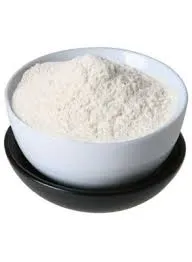
Nov . 05, 2024 17:15 Back to list
hydroxypropyl methyl cellulose
Hydroxypropyl Methyl Cellulose A Multifunctional Polymer in Modern Industries
Hydroxypropyl methyl cellulose (HPMC) is a versatile, semi-synthetic polymer derived from cellulose, which has gained significant attention and application across various industries due to its unique properties. As a non-ionic, water-soluble derivative of cellulose, HPMC has found its place in food, pharmaceuticals, cosmetics, and construction, owing to its excellent film-forming abilities, viscosity-modifying properties, and thermal stability.
Structure and Properties
HPMC is produced through the reaction of cellulose with propylene oxide and methyl chloride. This process introduces hydroxypropyl and methoxy groups into the cellulose structure, enhancing its solubility in water and organic solvents while maintaining the basic characteristics of cellulose. The degree of substitution and the molecular weight of HPMC can be tailored during synthesis to yield different grades with varying viscosity and solubility profiles, making it suitable for a wide array of applications.
One of the most notable properties of HPMC is its ability to form stable gels and emulsions, making it an essential ingredient in many formulations. Its high viscosity at low concentrations allows it to act as an effective thickening agent. Additionally, HPMC has a unique ability to provide a smooth texture, which is particularly beneficial in cosmetic and food applications.
Applications in the Food Industry
In the food industry, HPMC is commonly employed as a thickener, stabilizer, and emulsifier. It is often found in baked goods, sauces, and dressings, where it enhances the texture and shelf-life of products. HPMC helps in retaining moisture, which is crucial for preventing staleness in baked items. Additionally, it can act as a fat replacer, assisting in reducing the calorie content of products without compromising taste or mouthfeel.
Moreover, HPMC’s status as a non-toxic, plant-derived ingredient makes it an attractive choice for health-conscious consumers and food manufacturers alike, ensuring compliance with food safety regulations.
hydroxypropyl methyl cellulose

Role in Pharmaceuticals
In the pharmaceutical sector, HPMC is valued for its role as a binder and film-coating agent in tablet formulations. Its ability to control drug release rates makes it a crucial component in the development of sustained-release medications. By modifying the grade of HPMC used, formulators can tailor the release profile of active ingredients to improve therapeutic efficacy and patient compliance.
Additionally, HPMC is utilized in ophthalmic solutions due to its ability to provide a lubricating and viscoelastic nature, offering relief in dry eye formulations. Its biocompatibility and low irritation potential add to its appeal within sensitive applications.
HPMC in Construction
The construction industry also benefits from the multifunctional properties of HPMC. As an additive in cement and plaster, HPMC enhances water retention, which is critical for maintaining workability during application. It improves adhesion and reduces the risk of cracking in finished products. Furthermore, HPMC aids in the stabilization and strength of building materials, contributing to improved durability and longevity.
Conclusion
Hydroxypropyl methyl cellulose is a remarkable polymer that showcases the innovative potential of modified natural products. Its versatility across various industries—from food and pharmaceuticals to construction—underscores its significance in modern applications. As consumers increasingly seek safe, effective, and sustainable ingredients, the demand for HPMC is likely to continue growing. Research and development in this area promise even more advanced formulations and applications, solidifying HPMC’s role as a key player in enhancing product performance and consumer satisfaction. Whether used as a thickener, binder, or stabilizer, HPMC exemplifies how science can transform natural materials into indispensable tools for a better quality of life.
-
Versatile Hpmc Uses in Different Industries
NewsJun.19,2025
-
Redispersible Powder's Role in Enhancing Durability of Construction Products
NewsJun.19,2025
-
Hydroxyethyl Cellulose Applications Driving Green Industrial Processes
NewsJun.19,2025
-
Exploring Different Redispersible Polymer Powder
NewsJun.19,2025
-
Choosing the Right Mortar Bonding Agent
NewsJun.19,2025
-
Applications and Significance of China Hpmc in Modern Industries
NewsJun.19,2025







